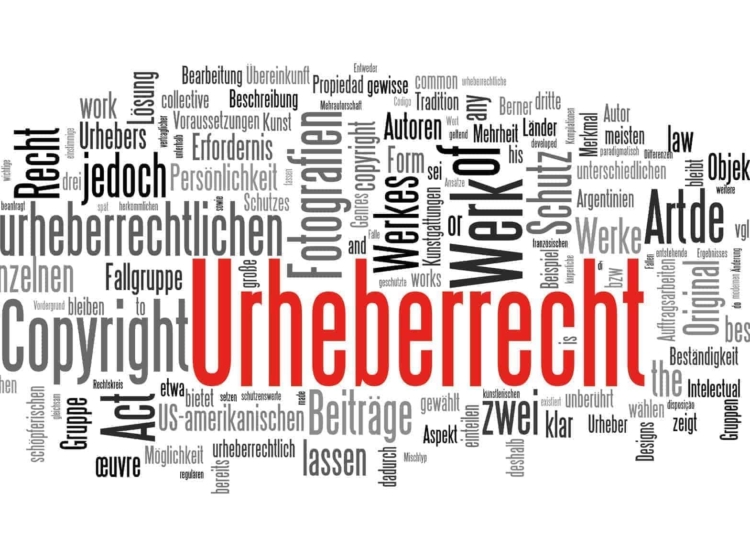The German Federal Court of Justice has decided to refer questions to the Court of Justice of the European Union for clarification of the copyright concept of pastiche.
Facts:
The first plaintiff and the former second plaintiff, who died on April 21, 2020 and whose legal successor is the current second plaintiff, were members of the music group “Kraftwerk”. The latter released a record in 1977, on which the musical piece “Metal on Metal” can be found. Defendants 2 and 3 are the composers of the title “Nur mir” (“Only Me”), which defendant 1 recorded with singer Sabrina Setlur on recordings released in 1997.
To produce the title, the defendants had electronically copied (“sampled”) two seconds of a rhythm sequence from the title “Metal on Metal” and added it to the title “Only Me” in continuous repetition.
The plaintiffs regard this as an infringement of their rights as producers of sound recordings and of the copyright of the first plaintiff. They have filed a claim against the defendants for an injunction to produce and market sound recordings with the recording “Nur mir”. They also demanded a declaration that the defendant was liable for damages, the provision of information, and the surrender of the sound recordings for the purpose of destruction.
Previous process history:
The district court upheld the action. The defendant’s appeal has been unsuccessful. On appeal by the defendant, the Federal Court of Justice reversed the judgment on appeal and referred the case back to the Higher Regional Court for a new hearing and decision.
The Higher Regional Court again dismissed the defendant’s appeal. The Federal Court of Justice rejected the defendant’s renewed appeal. The Federal Constitutional Court overturned the appeal judgments and the second appeal judgment and referred the case back to the Federal Court of Justice. The latter then referred questions to the Court of Justice of the European Union on the interpretation of Directive 2001/29/EC on the harmonization of certain aspects of copyright and related rights in the information society and Directive 2006/115/EC on rental right and lending right and on certain rights related to copyright in the field of intellectual property, which the Court answered in its judgment of July 29, 2019.
By the third appeal judgment, the Senate reversed the decision of the Court of Appeal on the appeal of the defendant and referred the case back to the Court of Appeal for a new hearing and decision. The Court of Appeal then amended the judgment of the Regional Court to the effect that the defendants were ordered to provide information on the number of sound recordings of the title “Nur mir” produced and/or delivered between December 22, 2002 and June 7, 2021 and to surrender copies of these sound recordings for the purpose of destruction, while dismissing the further action, and that their obligation to pay damages was established in this respect.
The Court of Appeal allowed the appeal insofar as it found to the detriment of the plaintiffs with regard to the claims asserted from June 7, 2021. In their appeal, which the defendants request be dismissed, the plaintiffs continue to pursue their claims asserted in the action from June 7, 2021.
Decision of the Federal Court of Justice:
The Federal Court of Justice has now suspended the proceedings again and referred questions to the Court of Justice of the European Union on the interpretation of Directive 2001/29/EC of the European Parliament and of the Council of May 22, 2001 on the harmonization of certain aspects of copyright and related rights in the information society.
The appeal is successful if the Court of Appeal wrongly assumed that the claims asserted by the plaintiffs are excluded as of June 7, 2021, because the adoption of the rhythm sequence from the title “Metal on Metal” by way of sampling is a permissible use for the purpose of pastiche pursuant to Section 51a sentence 1 UrhG in the version applicable as of June 7, 2021, so that there is no infringement of the ancillary copyrights asserted by the plaintiffs as producers of sound recordings or performing artists and of the copyright of the first plaintiff.
This is what matters in the dispute because the musical piece “Nur mir” does not meet the requirements of a caricature or parody of the musical piece “Metall auf Metall” for lack of expression of humor or mockery (see BGHZ 225, 222 [juris, marginal no. 63] – Metall auf Metall IV).
In the view of the Federal Court of Justice, the first question is whether the restriction on use for the purpose of pastiches within the meaning of Art. 5 para. 3(k) of Directive 2001/29/EC is a catch-all provision in any case for an artistic treatment of a pre-existing work or other object of reference, including sampling, and whether restrictive criteria such as the requirement of humor, imitation of style or homage apply to the concept of pastiche.
The pastiche barrier could be understood as a general barrier to artistic freedom, which is necessary because artistic freedom cannot be given the necessary scope in all cases solely due to the immanent limitation of the scope of protection of exploitation rights to a use of works and performances in a recognizable form (cf. ECJ, GRUR 2019, 929 [juris para. 31] – Pelham et al.) and the other barrier regulations such as parody, caricature and quotation in particular. The technique of “electronic copying of audio fragments” (sampling) at issue here, in which a user takes an audio fragment from a sound carrier and uses it to create a new work, is a form of artistic expression that falls under the freedom of art protected by Art. 13 EU Charter of Fundamental Rights (ECJ, GRUR 2019, 929 [juris marginal no. 35] – Pelham et al.; on Art. 5 (3) sentence 1 GG cf. BVerfGE 142, 74 [juris marginal no. 89]).
The rights of authors, phonogram producers and performers under Art. 2 and 3 of Directive 2001/29/EC enjoy intellectual property protection under Art. 17 para. 2 EU Charter of Fundamental Rights. The objective of an appropriate balance of rights and interests is supported by the principle of equal treatment set forth in Art. 5 Par. 5 of Directive 2001/29/EC takes into account the “three-step test”, the requirements of which are met according to the findings of the Court of Appeal.
Next, according to the Federal Court of Justice, the further question arises as to whether the use “for the purpose” of a pastiche within the meaning of Art. 5 para. 3(k) of Directive 2001/29/EC requires a finding of an intention on the part of the user to use an object of copyright protection for the purpose of a pastiche, or whether the recognizability of its character as a pastiche is sufficient for a person who is aware of the referenced object of copyright protection and who has the intellectual understanding necessary to perceive the pastiche.



















